Let’s Talk Marvellous, Mighty Microgreen's
These young shoots are denser, than their older, larger plants, in nutrients, anti-oxidants and polyphenols, making them very tasty. It is thought that the higher concentration of these chemicals deters the plants’ normal predators, for example, snails. Ironically, it is what makes humans want to eat the Microgreens!
-

BROCCOLI
Beta carotene - from which the body makes vitamin A –for eyesight, immune system and healthy skin.
Calcium – for healthy bones and teeth and muscle contraction.
Antioxidants – mop up free radicals and so reduce risk of cancer.
Vitamin K – for blood clotting.
Carotenoids –lutein and zeathanthin –for eyesight
Vitamin B9 (folic acid or folate) – helps make red blood cells, aids protein synthesis, reduces risk of neural tube defects in fetus.
Sulforophane – inhibits tumour formation.
Vitamin C – to make collagen for blood vessel walls and joints, and to help absorb iron from the diet.
Phosphorus – for bones and teeth, for making the energy currency ATP, used by the body for all metabolism.
Vitamin E (alpha-tocophorol) – protects cells from damage by free radicals and so may reduce risk of cancer and inflammation.
-
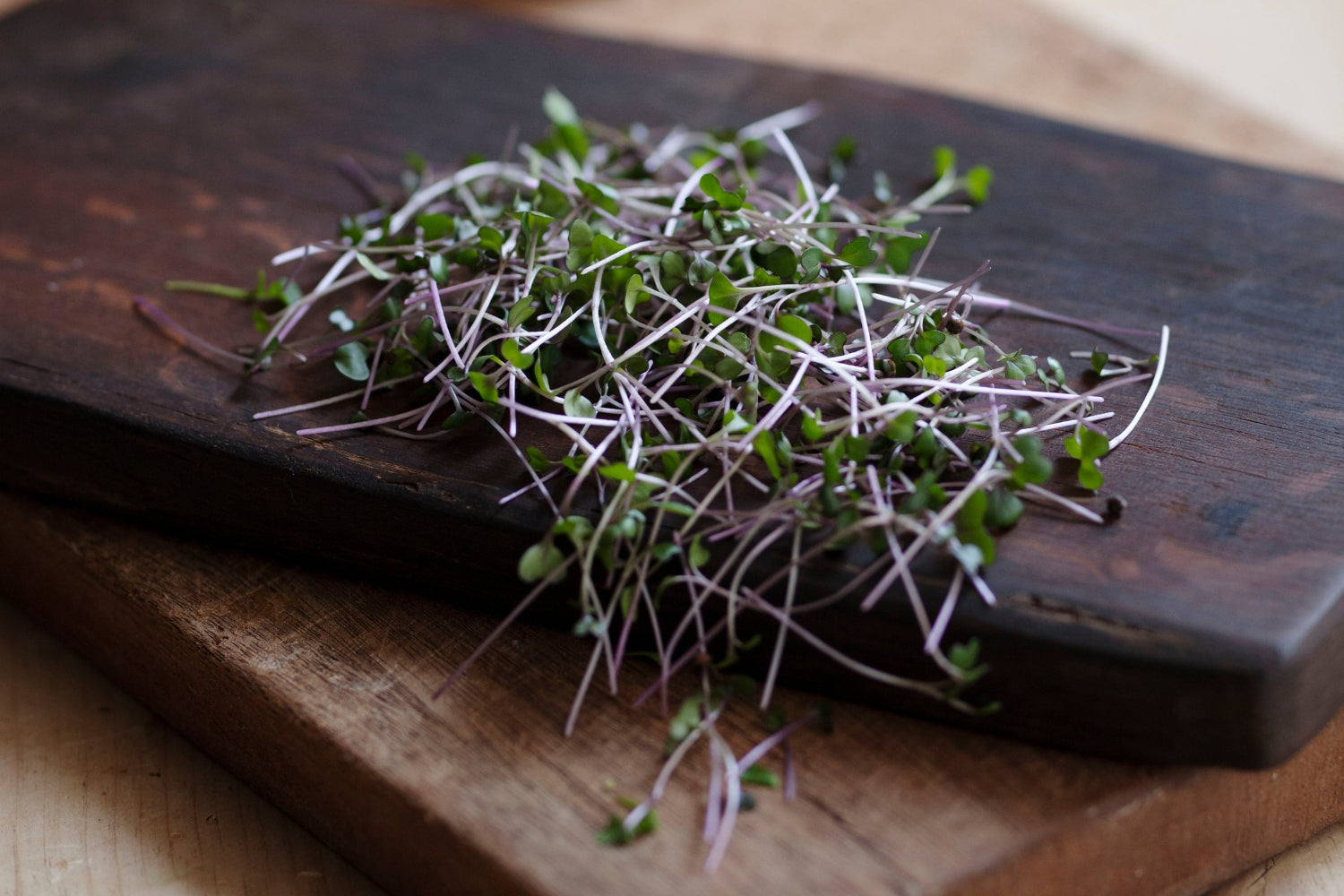
RED CABBAGE
Vitamin B1 (thiamine) – for carbohydrate metabolism, so you can obtain energy from the carbs you eat; helps nerve, heart and muscle function
Vitamin B2 (riboflavin) – for growth, metabolism and good health.
Calcium – for healthy bones and teeth and muscle contraction. Antioxidants – mop up free radicals and so reduce risk of cancer.
Vitamin K – for blood clotting.
Carotenoids –lutein and zeathanthin –for eyesight
Potassium – for nerve function
Beta carotene - from which the body makes vitamin A –for eyesight, immune system and healthy skin.
Vitamin C – to make collagen for blood vessel walls and joints, and to help absorb iron from the diet.
Iron – to make haemoglobin which is in red blood cells and carries oxygen to your cells; also for the electron transport systems in mitochondria – the parts of cells where respiration takes place to release energy from your food.
Sulforophane – inhibits tumour formation.
-
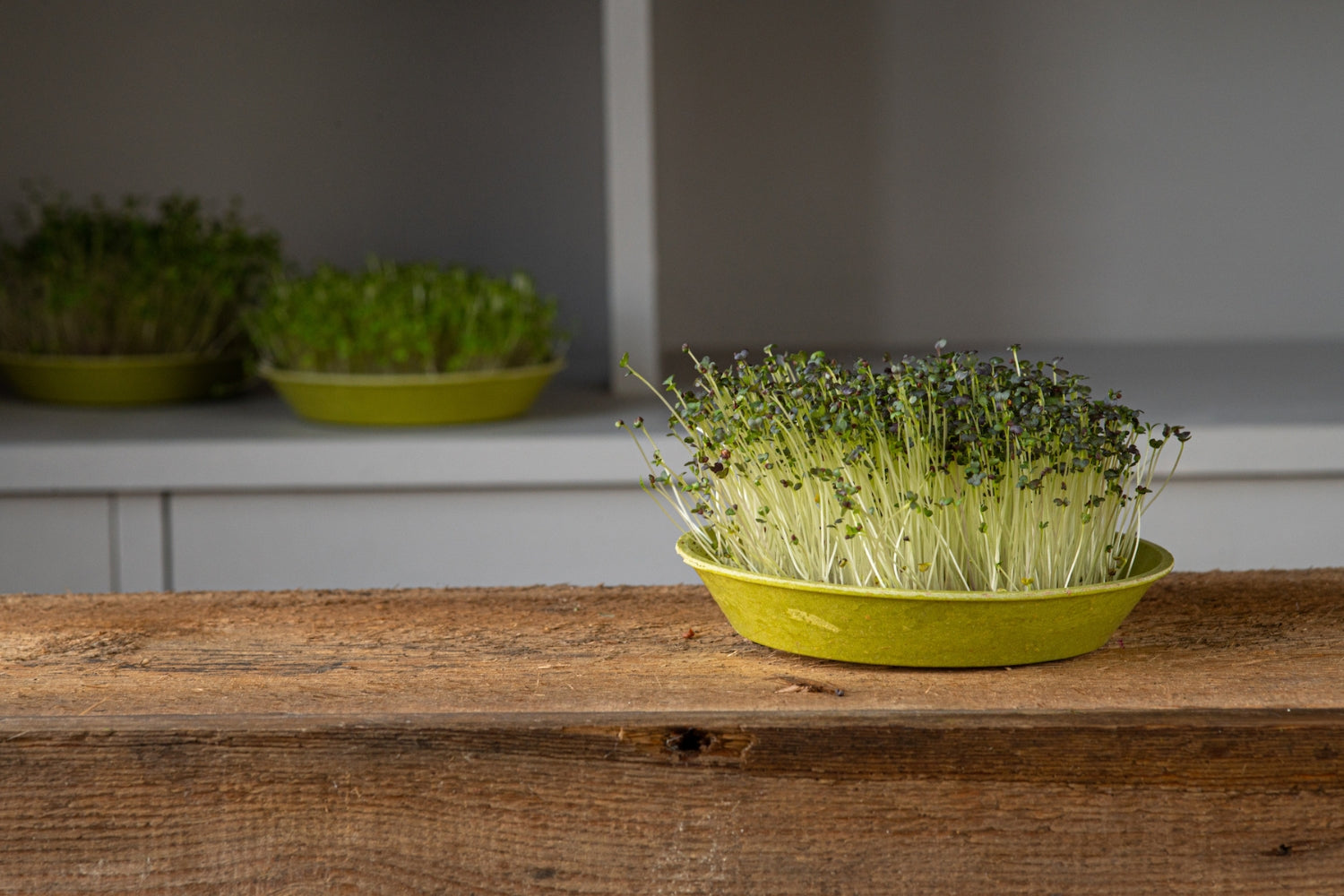
MIZUNA
Potassium – for nerve function
Calcium – for healthy bones and teeth and muscle contraction. Antioxidants – mop up free radicals and so reduce risk of cancer.
Vitamin K – for blood clotting.
Carotenoids –lutein and zeathanthin –for eyesight
Beta carotene - from which the body makes vitamin A –for eyesight, immune system and healthy skin.
Manganese – for liver function and helps the brain, nervous system and many enzymes.
Vitamin C – to make collagen for blood vessel walls and joints, and to help absorb iron from the diet.
Protein – a source of amino acids for growth.
Iron – to make haemoglobin which is in red blood cells and carries oxygen to your cells; also for the electron transport systems in mitochondria – the parts of cells where respiration takes place to release energy from your food.
-
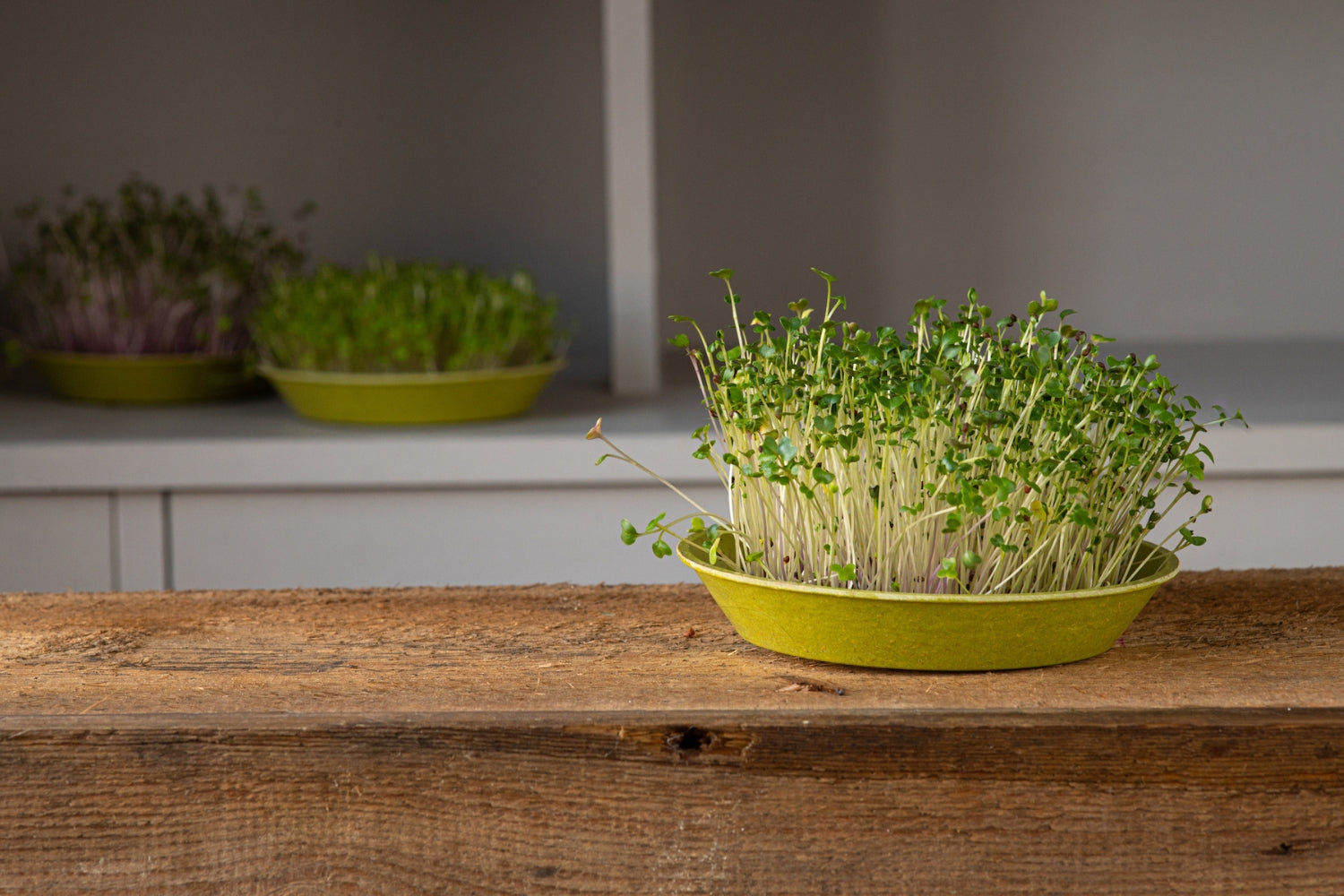
KALE
Vitamin B6 – for metabolism and to help make melatonin – the hormone that regulates sleep.
Calcium – for healthy bones and teeth and muscle contraction. Antioxidants – mop up free radicals and so reduce risk of cancer.
Vitamin K – for blood clotting.
Carotenoids – lutein and zeathanthin – for eyesight
Beta carotene - from which the body makes vitamin A –for eyesight, immune system and healthy skin.
Manganese – for liver function and helps the brain, nervous system and many enzymes.
Vitamin C – to make collagen for blood vessel walls and joints, and to help absorb iron from the diet.
Potassium – for nerve function
Sulforophane – inhibits tumour formation.
-
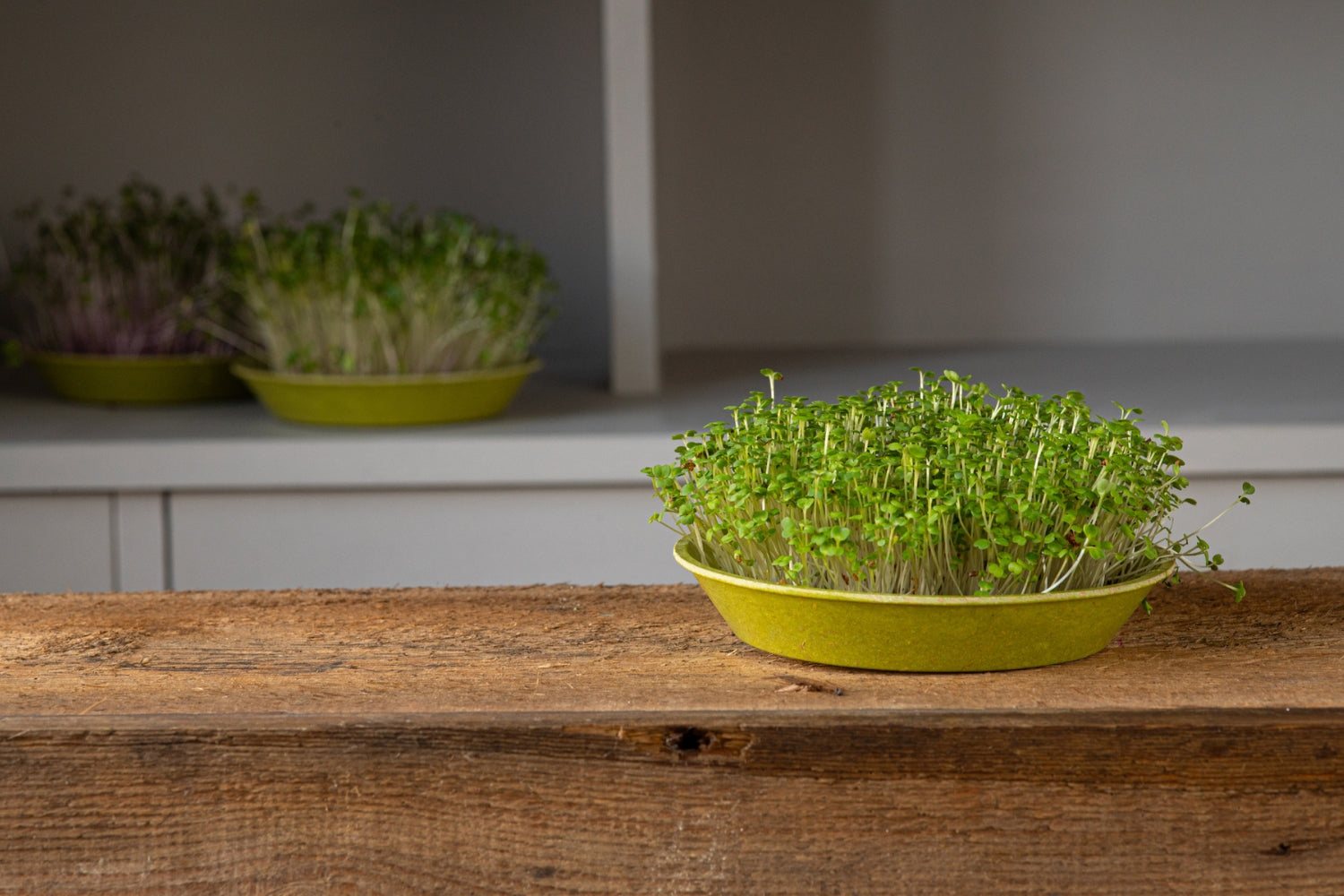
ROCKET
Sulforophane – inhibits tumour formation.
Calcium – for healthy bones and teeth and muscle contraction. Antioxidants – mop up free radicals and so reduce risk of cancer.
Vitamin K – for blood clotting.
Carotenoids – lutein and zeathanthin – for eyesight
Beta carotene - from which the body makes vitamin A –for eyesight, immune system and healthy skin.
Vitamin C – to make collagen for blood vessel walls and joints, and to help absorb iron from the diet.
Antioxidants - mop up free radicals and so reduce risk of cancer.
-
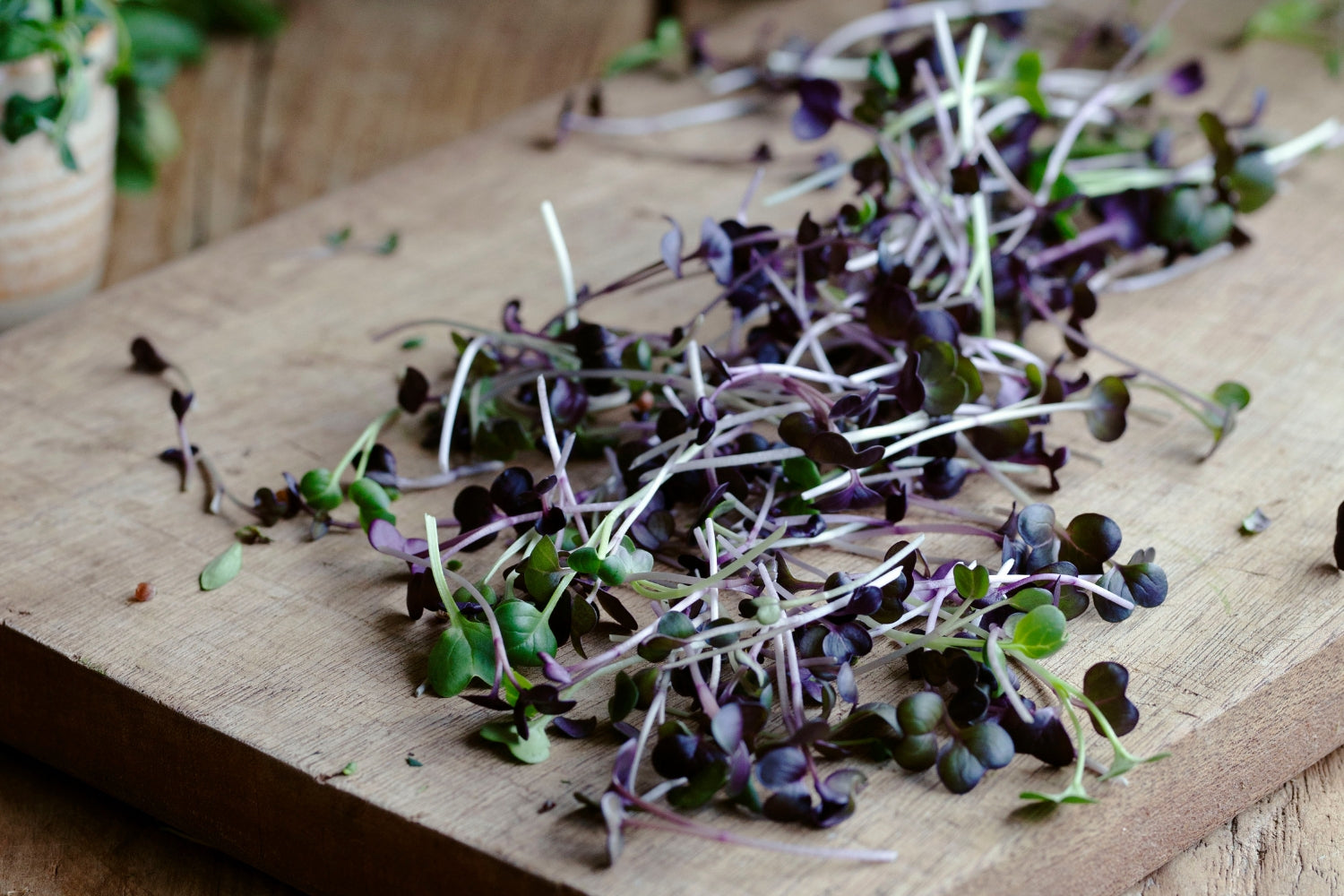
RADISH
Vitamin B6 – for metabolism and to help make melatonin – the hormone that regulates sleep.
Calcium – for healthy bones and teeth and muscle contraction. Antioxidants – mop up free radicals and so reduce risk of cancer.
Vitamin K – for blood clotting.
Carotenoids – lutein and zeathanthin – for eyesight
Beta carotene - from which the body makes vitamin A –for eyesight, immune system and healthy skin.
Vitamin E (alpha-tocophorol) – protects cells from damage by free radicals and so may reduce risk of cancer and inflammation.
Iron – to make haemoglobin which is in red blood cells and carries oxygen to your cells; also for the electron transport systems in mitochondria – the parts of cells where respiration takes place to release energy from your food.
Magnesium – for nerve and muscle (including the heart) function, for immune system, phosphorus – for bones and teeth, for making the energy currency ATP, used by the body for all metabolism.
Carotenoids – lutein and zeathanthin – for eyesight
Potassium – for nerve function
Protein – a source of amino acids for growth.
Vitamin C – to make collagen for blood vessel walls and joints, and to help absorb iron from the diet.
Sulforophane – inhibits tumour formation.
-
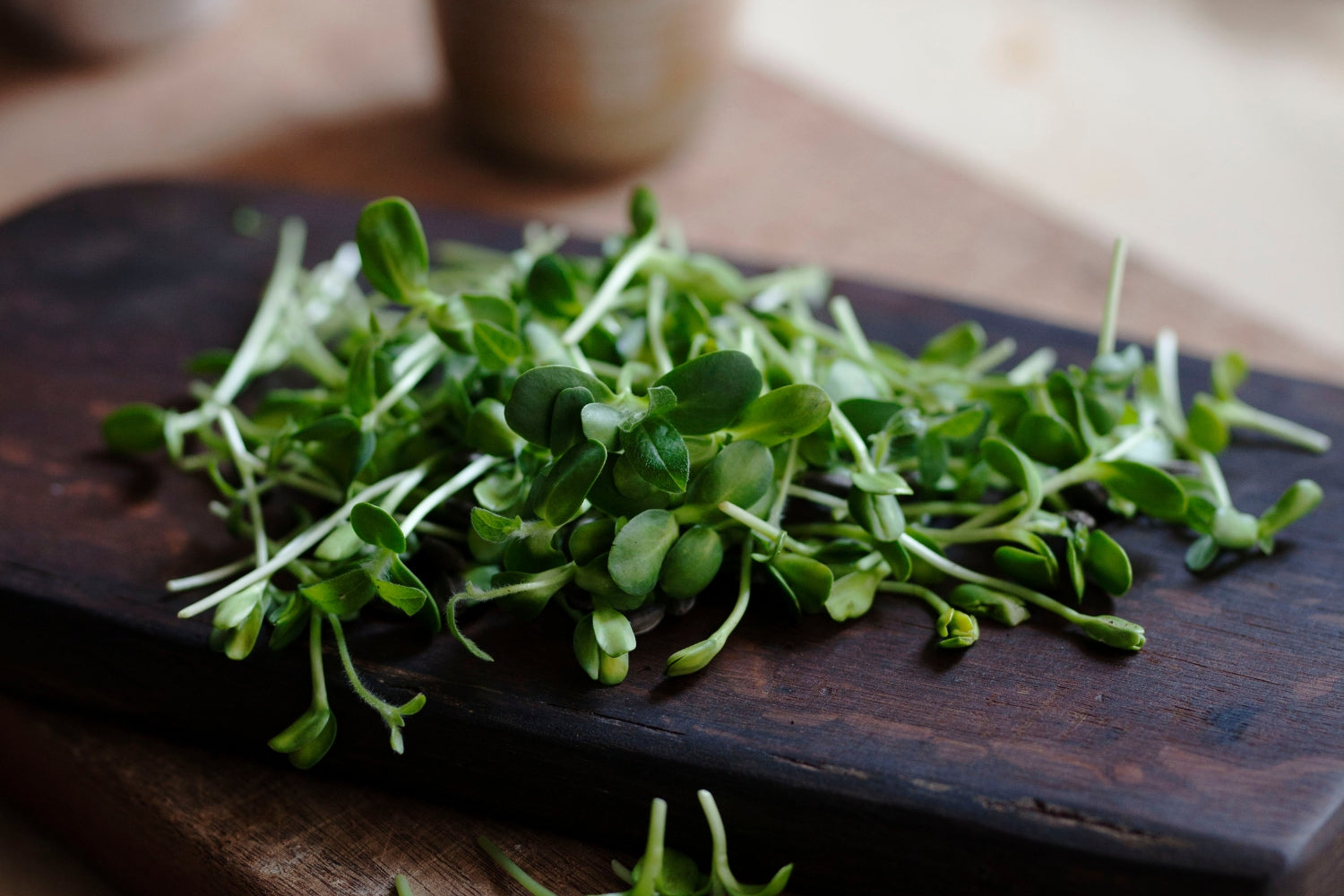
SUNFLOWER
Vitamin E (alpha-tocophorol) – protects cells from damage by free radicals and so may reduce risk of cancer and inflammation.
Calcium – for healthy bones and teeth and muscle contraction. Antioxidants – mop up free radicals and so reduce risk of cancer.
Vitamin K – for blood clotting.
Carotenoids – lutein and zeathanthin – for eyesight
Beta carotene - from which the body makes vitamin A –for eyesight, immune system and healthy skin.
Vitamin C – to make collagen for blood vessel walls and joints, and to help absorb iron from the diet.
Selenium – for thyroid function and immune system.
-
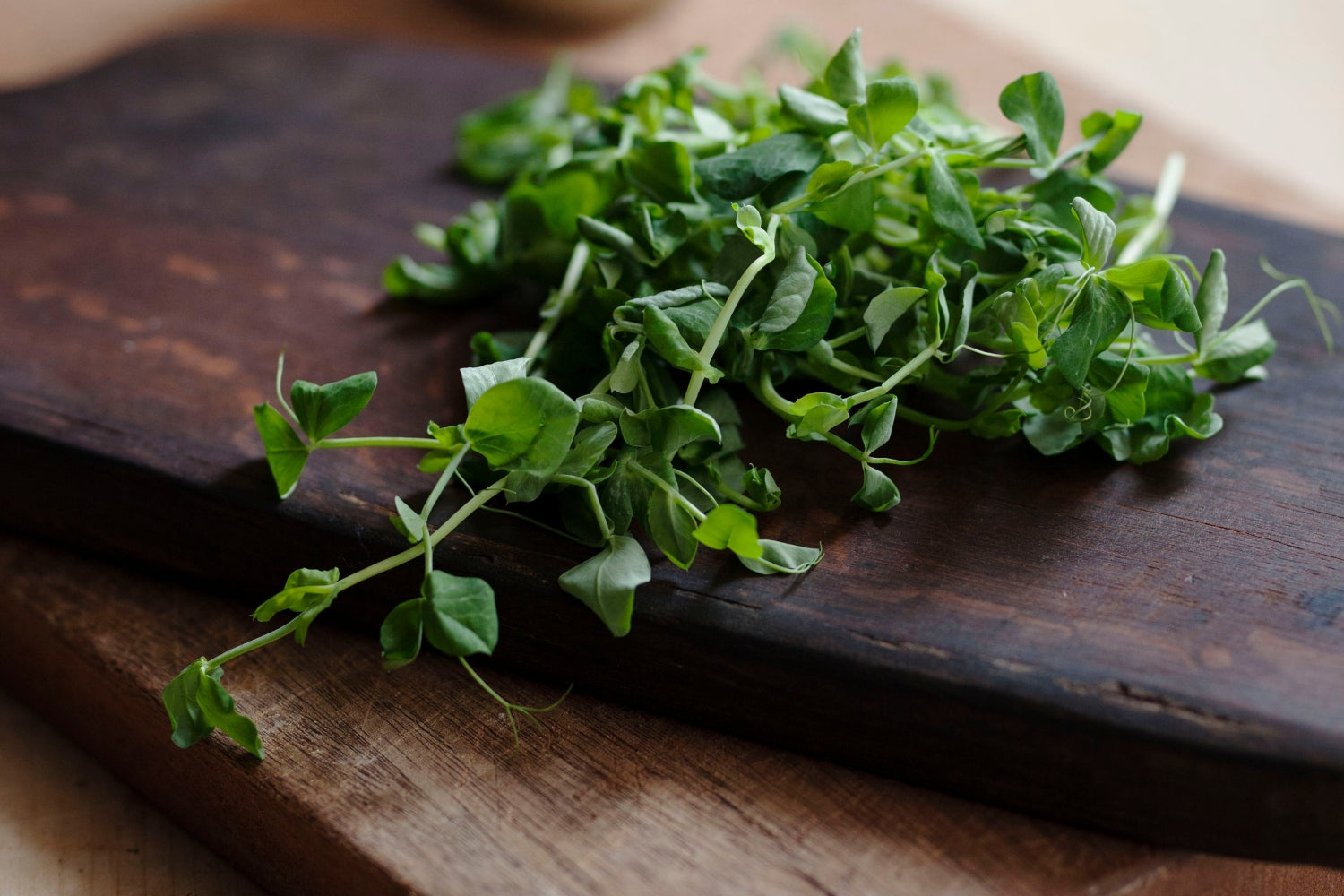
PEA
Vitamin B9 (folic acid or folate) – helps make red blood cells, aids protein synthesis, reduces risk of neural tube defects in fetus.
Calcium – for healthy bones and teeth and muscle contraction. Antioxidants – mop up free radicals and so reduce risk of cancer.
Vitamin K – for blood clotting.
Carotenoids – lutein and zeathanthin – for eyesight
Beta carotene - from which the body makes vitamin A –for eyesight, immune system and healthy skin.
Vitamin C – to make collagen for blood vessel walls and joints, and to help absorb iron from the diet.
Protein – a source of amino acids for growth.
-
RESEARCH 01
LinkA helpful link to the research relating to the nutritional benefits of Microgreens from the Natural Library of Medicine.
-
RESEARCH 02
LinkA helpful link to the research relating to the nutritional benefits of Microgreens from the The Health Line.
-
RESEARCH 03
LinkA helpful link to the research relating to the nutritional benefits of Microgreens from Microgreens World.
-
RESEARCH 04
LinkA helpful link to Prof. Tim Spector relating to microbiome (aka gut health) and why we should be eating more plants for their health benefits.
-
-
-









